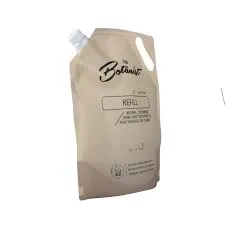Email: enid@bc-pak.com
Tel: 86-757- 88811186
- Afrikaans
- Albanian
- Amharic
- Arabic
- Armenian
- Azerbaijani
- Basque
- Belarusian
- Bengali
- Bosnian
- Bulgarian
- Catalan
- Cebuano
- chinese_simplified
- chinese_traditional
- Corsican
- Croatian
- Czech
- Danish
- Dutch
- English
- Esperanto
- Estonian
- Finnish
- French
- Frisian
- Galician
- Georgian
- German
- Greek
- Gujarati
- haitian_creole
- hausa
- hawaiian
- Hebrew
- Hindi
- Miao
- Hungarian
- Icelandic
- igbo
- Indonesian
- irish
- Italian
- Japanese
- Javanese
- Kannada
- kazakh
- Khmer
- Rwandese
- Korean
- Kurdish
- Kyrgyz
- Lao
- Latin
- Latvian
- Lithuanian
- Luxembourgish
- Macedonian
- Malgashi
- Malay
- Malayalam
- Maltese
- Maori
- Marathi
- Mongolian
- Myanmar
- Nepali
- Norwegian
- Norwegian
- Occitan
- Pashto
- Persian
- Polish
- Portuguese
- Punjabi
- Romanian
- Russian
- Samoan
- scottish-gaelic
- Serbian
- Sesotho
- Shona
- Sindhi
- Sinhala
- Slovak
- Slovenian
- Somali
- Spanish
- Sundanese
- Swahili
- Swedish
- Tagalog
- Tajik
- Tamil
- Tatar
- Telugu
- Thai
- Turkish
- Turkmen
- Ukrainian
- Urdu
- Uighur
- Uzbek
- Vietnamese
- Welsh
- Bantu
- Yiddish
- Yoruba
- Zulu
biodegradable food pouch
Views :
Update time : Jan . 13, 2025 18:05
Biodegradable food pouches have become a cornerstone in sustainable packaging innovation, offering a promising solution to the growing concern over plastic waste. These eco-friendly pouches are engineered from materials that naturally decompose, leaving a minimal environmental footprint, unlike traditional non-degradable plastics. As an expert in sustainable packaging, I have dedicated years to understanding the intricacies of biodegradable pouches, their benefits, challenges, and potential impact on the environment.
Building trust with consumers is paramount, and communicating the benefits of biodegradable food pouches can enhance a brand's reputation for environmental responsibility. Transparency about the materials used and the certifications these products carry, such as ASTM D6400 or EN 13432, can reinforce the authenticity of sustainability claims. Nevertheless, challenges exist, notably the potential limitations in barrier properties compared to traditional plastics and the sometimes higher cost of production. Overcoming these hurdles requires ongoing research and development and a commitment to innovation in plant-based materials. As experts continue to explore new formulas and manufacturing techniques, the performance gap between biodegradable and conventional plastics continues to narrow, paving the way for widespread adoption. In conclusion, biodegradable food pouches embody a critical step towards a sustainable future. By leveraging scientific expertise, industry knowledge, and a commitment to environmental stewardship, businesses can not only respond to consumer demand but also lead the charge in reducing plastic waste. Adopting biodegradable packaging is more than a trend—it is a strategic decision that speaks to a company's values and demonstrates a forward-thinking approach to business in an age of increasing ecological awareness.


Building trust with consumers is paramount, and communicating the benefits of biodegradable food pouches can enhance a brand's reputation for environmental responsibility. Transparency about the materials used and the certifications these products carry, such as ASTM D6400 or EN 13432, can reinforce the authenticity of sustainability claims. Nevertheless, challenges exist, notably the potential limitations in barrier properties compared to traditional plastics and the sometimes higher cost of production. Overcoming these hurdles requires ongoing research and development and a commitment to innovation in plant-based materials. As experts continue to explore new formulas and manufacturing techniques, the performance gap between biodegradable and conventional plastics continues to narrow, paving the way for widespread adoption. In conclusion, biodegradable food pouches embody a critical step towards a sustainable future. By leveraging scientific expertise, industry knowledge, and a commitment to environmental stewardship, businesses can not only respond to consumer demand but also lead the charge in reducing plastic waste. Adopting biodegradable packaging is more than a trend—it is a strategic decision that speaks to a company's values and demonstrates a forward-thinking approach to business in an age of increasing ecological awareness.
Recommend products
Read More >>
Related News
Read More >>













